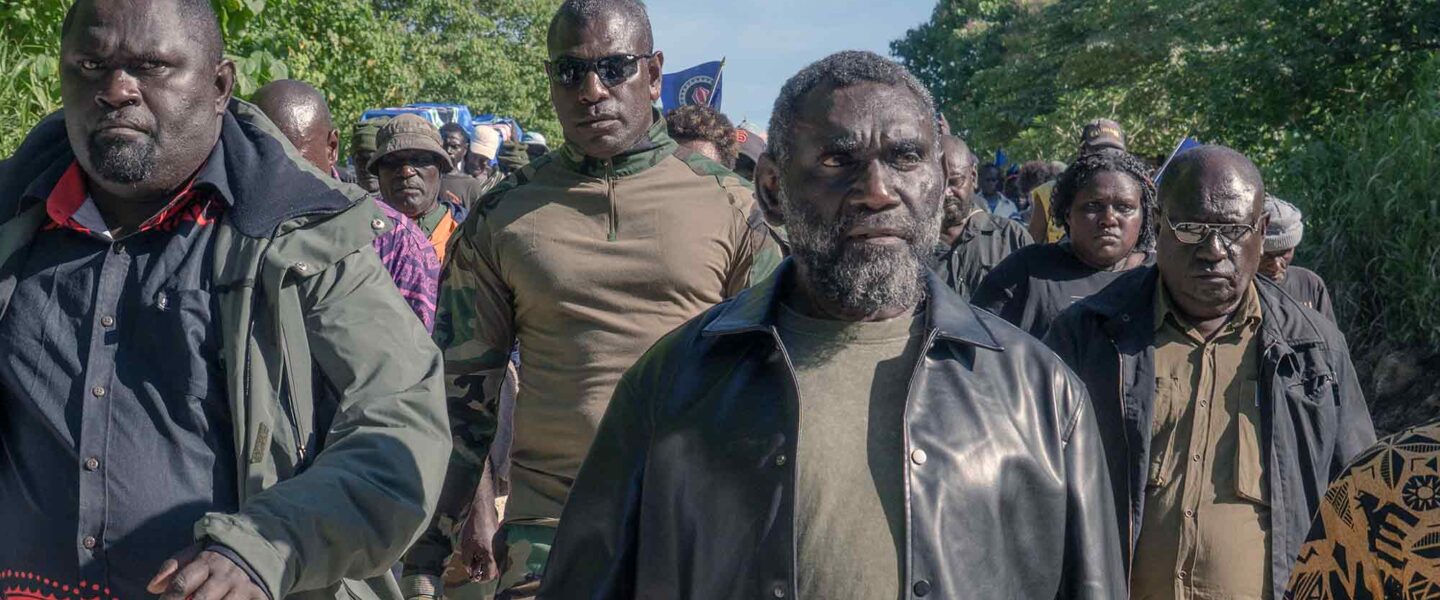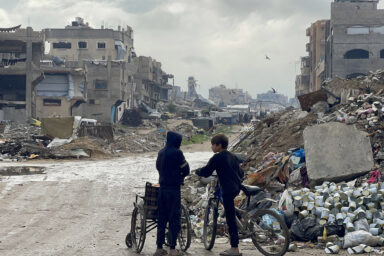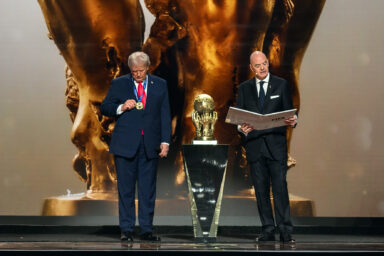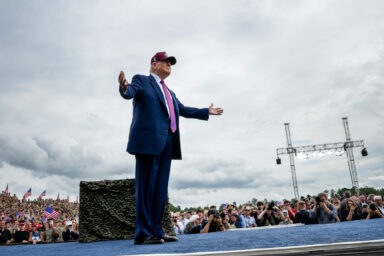A mineral-rich island in the Pacific races to become the world’s 194th nation — and to free itself from generations of foreign control.
|
Listen To This Story
|
The collapse of the world’s leading colonial empires, which occurred in the 1950s, left much of the latter half of the 20th century in turmoil, as one newly independent former colony after another sought to define its own identity and carve out its place in the global economy.
The Autonomous Region of Bougainville hopes to gain independence from Papua New Guinea (PNG) in September 2027, in what could be the latest and possibly final act in the process of decolonization.
It has been a long battle, in which the former colonized populations of the developing nations have struggled to determine their own destiny. When the United Nations was created in 1945, 50 countries were present, and most of the planet was still controlled by only five major powers. Today, the United Nations General Assembly counts 193 member states. Bougainville hopes to become the 194th.
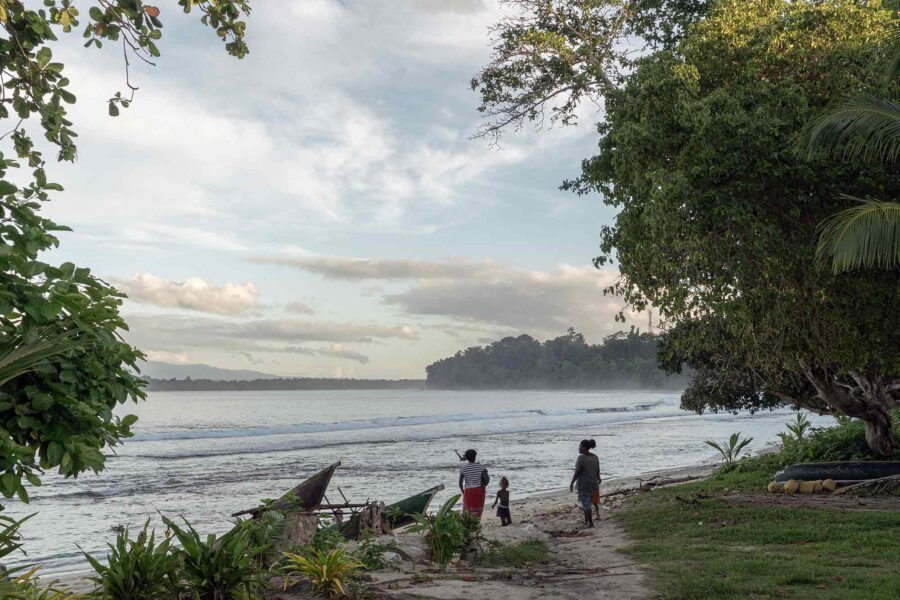
Flying into Bougainville, the largest island in the Western Pacific’s Solomon Islands chain, feels like reaching the edge of the world. Although the rest of the Solomon Islands have long since declared their own independence, Bougainville, because of its complicated history, is still, as noted above, officially part of PNG, some 500 miles away. The autonomous territory has a total population of around 300,000 and consists of Bougainville Island and the much smaller island of Buka, which is separated by a deep channel only 300 meters wide. The capital is located on Buka.
As the aging plane carrying me toward Buka begins its descent, a swath of land blanketed in tropical forest breaks through the clouds, crowned by a towering volcano. A handful of villages line the coast, gazing out over a seemingly infinite ocean. Louis-Antoine de Bougainville, the famed French explorer, must have been just as awestruck when he first approached the island by sea in 1768. It’s easy to see why he claimed it with his name.
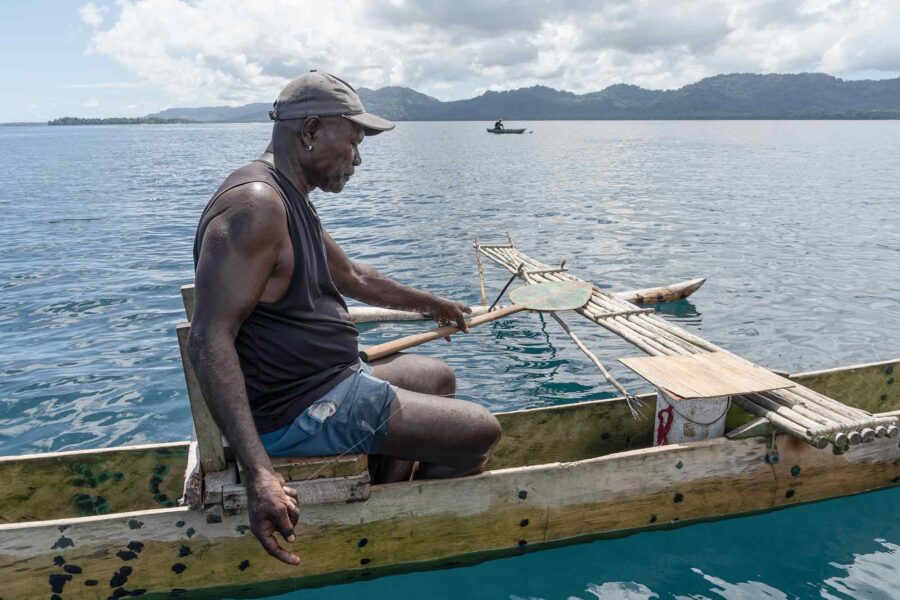
After a sharp braking on the short runway and a wait for luggage between a stack of pallets and a tow tractor, we enter the small town of Buka. Bougainville’s capital is little more than a few streets flanked by warehouses, a pungent coconut oil mill, gritty supermarkets, and run-down hotels. Down by the water, the market teems with locals flashing red-stained smiles — the telltale sign of their constant chewing of betel nuts, an addictive regional delicacy.
Escaping Post-Colonial Neglect
But behind this vibrant island life lies a quiet, determined revolt. After a 2019 referendum revealed that a resounding 98 percent of voters want the island to declare independence from PNG, the island’s leaders have unilaterally set September 1, 2027, as their “Independence Day.”
For many Bougainvilleans, the real struggle is not just political separation — it is liberation from layers of imposed control that resulted from outsiders laying claim to the island’s destiny.
In 1898, Germany tried to claim the island as part of a German New Guinea colonial possession. In 1914, at the outbreak of World War I, the Australians kicked the Germans out and included Bougainville as part of their own claims to colonial control over PNG. The Japanese invaded at the outbreak of World War II, and then the Americans drove the Japanese out and eventually returned the islands to Australian control. By the time PNG declared independence in 1975, Bougainville had been assigned, almost as a de facto result of history, to PNG.
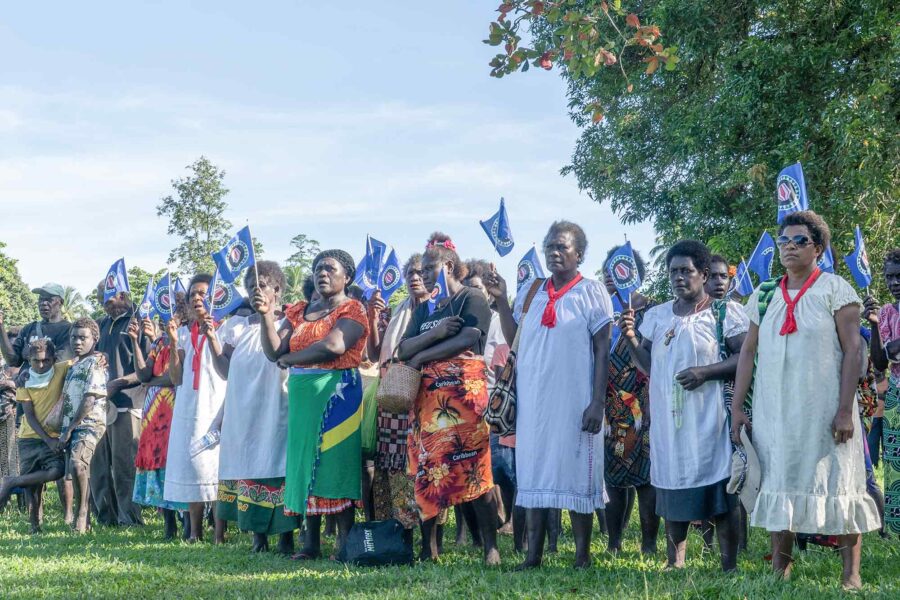
The chances are that no one would have cared much about Bougainville, and its roughly 300,000 inhabitants, if it hadn’t been for the fact that the island was discovered to have one of the world’s richest concentrations of copper, a metal prized among other things for its extraordinary ability to conduct electric current.
The Panguna mine, located on the big island, became one of the world’s largest open-pit mines, extracting 100,000 tons of copper ore a day prior to its closure in 1989. At its high point, the Australia-based Rio Tinto mining company accounted for 17 percent of Bougainville’s GDP.
While the extraordinarily lucrative mine made Bougainville suddenly significant, the sudden copper wealth quickly proved to be a double-edged sword. Rio Tinto imported hundreds of workers from PNG to work in the mine, and they soon began to compete with Bougainville’s original inhabitants. Bougainville’s population generally considers itself to be Black. The Papuans were soon referred to as “red skins” because of the reddish color of their complexion. The Australians were simply “white.” Bougainville’s original population, not surprisingly, began to feel that it was being crowded out of an extraordinarily rich enterprise that rightfully should have belonged to them.

Walking across Buka, it is clear why PNG has always felt — and still feels — like a foreign place to Bougainvilleans, who share a culture much closer to that of neighboring Melanesian islands.
To make matters worse, Bougainville continues to be one of PNG’s poorest provinces — a reality many locals blame on years of neglect by the national government. “The central government doesn’t care about us,” said Rebecca Tiarani, a 32-year-old teacher I met near Buka’s market, who continued:
The hospital is falling apart. We have no university. Most of our roads are just dirt tracks. There’s barely any electricity, no running water — and that’s despite the island’s immense natural wealth. If we gain independence, we can take control of our future and develop the land on our own terms.
Resisting Economic Exploitation
Besides copper, Bougainville — which is larger than Puerto Rico or Cyprus, and just slightly smaller than Lebanon — is rich in timber, cocoa, coconut, and abundant fish stocks, and it is home to nearly 6 percent of the world’s tuna. But its most significant asset lies buried within its dramatic mountain spine: the Panguna copper mine.
Bougainville’s immense natural wealth, however, presented a paradox, a “tricky gift” that raised the neocolonialist threat of resource curse and exploitation by foreign powers.
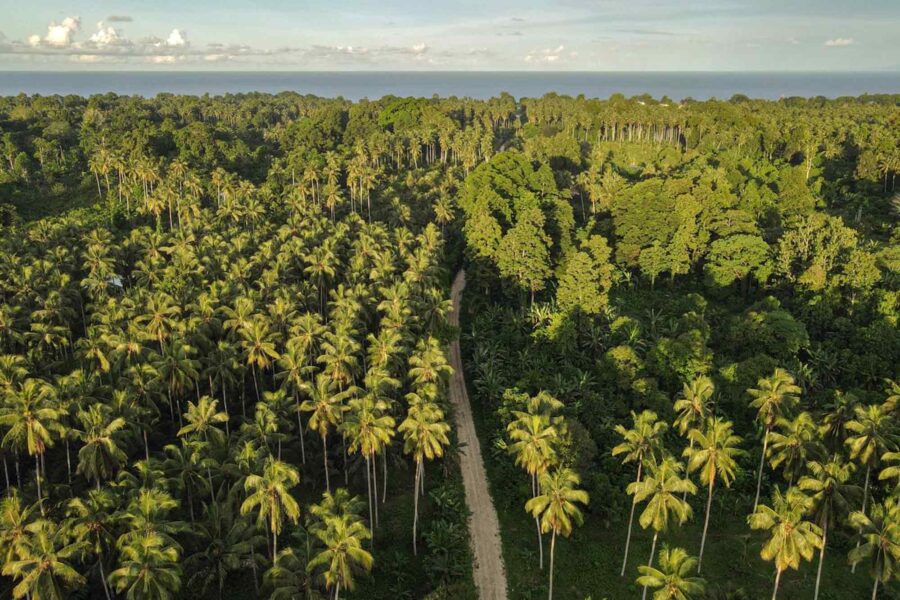
During the 1970s and 1980s, the Panguna mine was unquestionably a colossal enterprise, but the profits went overseas, leaving environmental degradation behind. When local citizens finally decided in 1988 that they had had enough, they demanded a share of the wealth and an end to the pollution. Instead of responding to their demands, Rio Tinto closed the mine.
The mine closure was followed by a brutal civil war that pitted the PNG army against local inhabitants, and left 20,000 dead. Bougainville experienced Oceania’s bloodiest fighting since World War II. PNG threw the island deeper into poverty by maintaining a decade-long blockade, relying on US-built UH-1 Iroquois helicopters and patrol boats supplied in large part by the Australian government.
Thirty-five years later, the Panguna mine still lies abandoned. Nature has swallowed buildings, smothered former processing plants, and reclaimed roads and rail lines. Embittered by Rio Tinto’s legacy, local residents have steadfastly refused to let any company resume operations.
Instead, hundreds of small-scale gold miners work the former Rio Tinto site with rudimentary tools — sometimes even bare hands — crushing rock with old engines and separating gold dust with mercury. Today, with commodity prices surging, the various minerals, from gold to copper, still buried beneath could be worth anywhere from $60 to $100 billion.
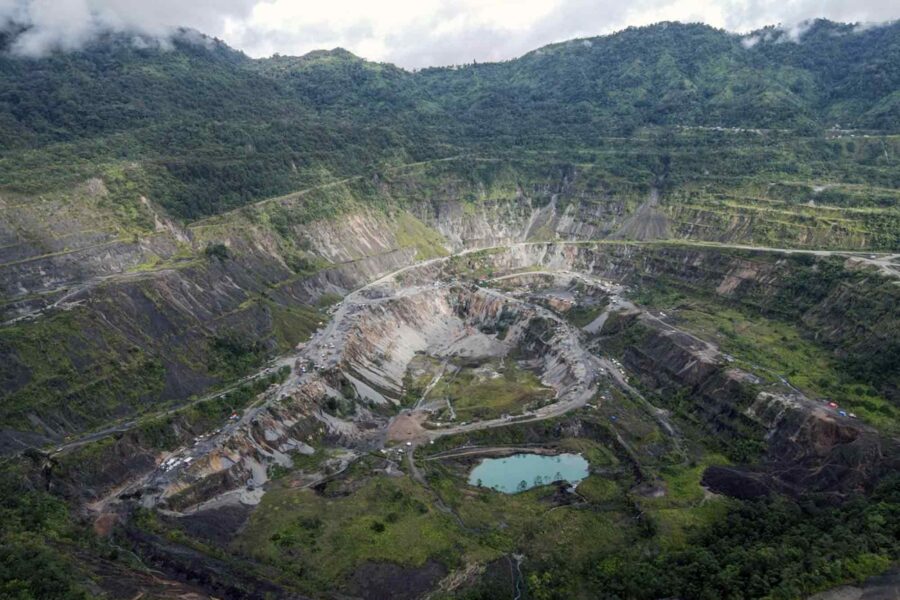
Although Bougainville eventually gained greater autonomy, the islanders feel that justice was never served. Thousands of bodies remain scattered across the island.
In mid-May, I witnessed how raw the wounds still are: For the first time, a mass grave was exhumed beside a pristine creek. Around 20 men dug into the soil with shovels and pickaxes. Soon, bones began to surface — an arm, several skulls, and decades-old plastic boots. Sixteen pro-independence rebels were recovered under the watchful silence of their families. Most bore bullet wounds.
“My comrades were captured and executed by PNG’s army. Women from a nearby village were forced to dig the grave and bury them,” recalled Joe Pice, a former fighter who survived the massacre. “That bloodshed makes independence inevitable. If PNG blocks us again, the war could reignite.”
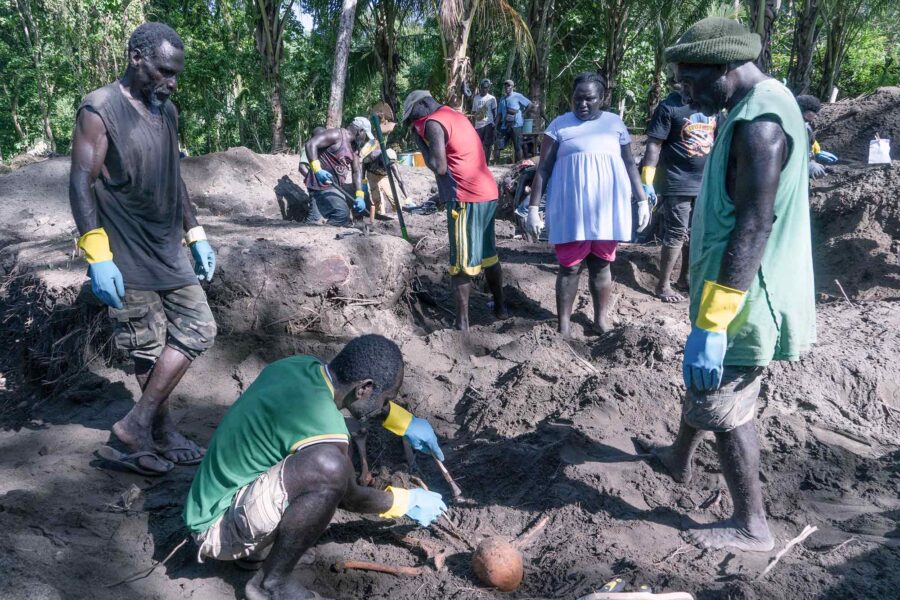
At their funeral, Bougainvillean President Ishmael Toroama, himself a former rebel commander, gave a defiant speech. “Papua New Guinea murdered these boys and never paid the price,” he said. “Their sacrifice must not be in vain. From where they rest, they urge us to finish what they started: to achieve independence.”
Their remains were paraded in open coffins through villages. Children were brought to see the bones — a raw and unsettling reminder of the past.
Giving fiery speeches is the easy part for Toroama. By 2027, the former rebel commander must lead the drafting of a new constitution, negotiate a peaceful exit from PNG, build a functioning administration, and prove that Bougainville can stand on its own.
Independence has long been a dream for his constituents, but what matters most is their children’s future. With the island’s vast natural wealth, Bougainvilleans expect independence to bring tangible improvements to daily life. “Our baseline for independence is that our children won’t have to leave to the mainland to go to university and will find a good job here,” said Tiarani.
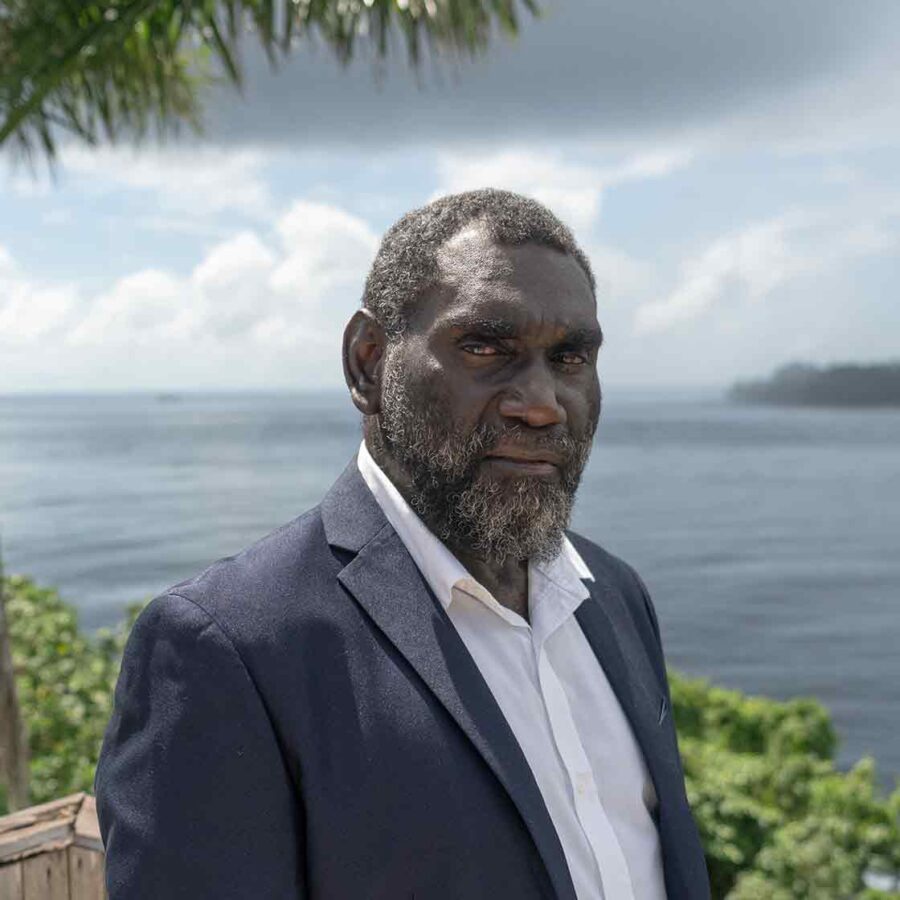
For Toroama’s administration — which still relies on PNG for 90 percent of its budget — fulfilling these lofty promises may hinge on one thing: reopening the Panguna mine. But that prospect remains remote. First, restarting the mine at an industrial scale would require rebuilding virtually all of its infrastructure — a project estimated to cost several billion dollars. “Only a handful of mining companies in the world have the capacity to take on something this big. Bougainville will need to bring in a foreign firm. That’s unavoidable,” explains Toroama, whose team is reportedly already in talks with several multinational players.
This scenario is also politically explosive, as welcoming back another foreign firm is seen by many as a new deal with the devil.
Most of Panguna’s small-scale miners come from the surrounding communities and have no intention of stepping aside. Fabian Gorotoa, a local miner I met at the bottom of the mine’s pit, put it this way:
The autonomous government keeps asking us to move so they can start exploration work. They’ll be waiting a long time. We will never allow a foreign company to set foot here again without serious social and environmental guarantees. The neocolonial model — exploiting locals and trashing nature — is over.
“Bougainville can be independent without digging billions out of the ground and poisoning its rivers,” added Warren, another miner. “In the Pacific, our way of life is simple, and that’s fine by us. We’re not chasing the West’s consumerism.”
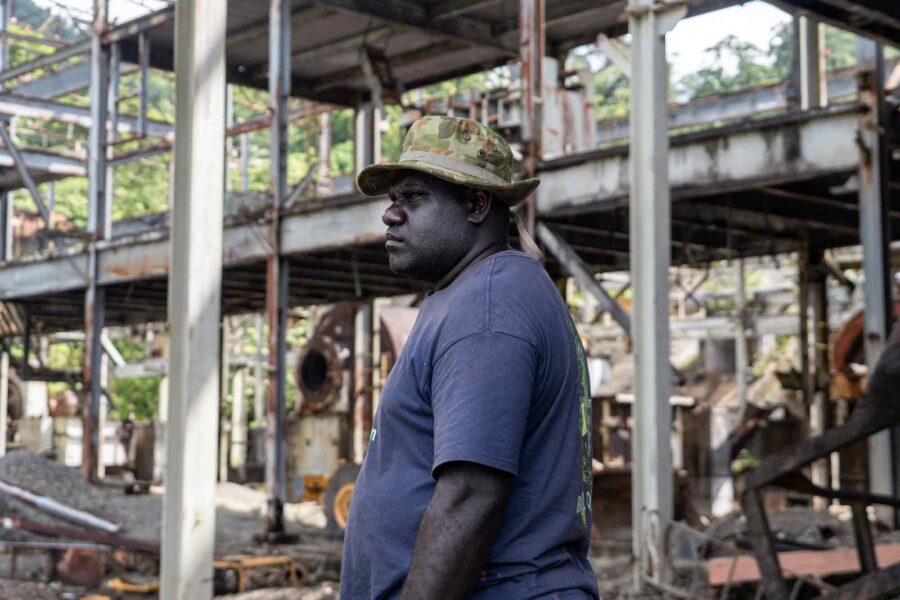
Local dignitaries say that villages around the mine are still armed — and warn that it wouldn’t take much for conflict to flare up again. Some members of Bougainville’s elite worry that their island, once it achieves independence, may end up broke and alone. “The situation is far too tense to expect mining at Panguna to resume anytime soon. It will take years — maybe decades — to hold proper consultations and bring a multinational back in,” said Fidelis Semoso, a former presidential candidate.
Wary of Geopolitical Patronage
Even if Bougainville avoids economic exploitation, it faces a third trap: the pressure to align with a global superpower, risking its hard-won autonomy for external patronage.
The Western Pacific has become a key battleground in the strategic rivalry between China and the US, with both wooing nations for influence. The US Department of Defense is launching an ambitious infrastructure initiative to disperse its airpower across smaller Pacific bases, aiming to reduce vulnerability in a potential conflict over Taiwan.
Bougainville has played this role before: During World War II, the island played a pivotal role in the Pacific campaign. Allied forces fought fierce battles to wrest it from Japanese control, and the island became a key base for launching operations toward the Philippines.
With the Western Pacific back in the spotlight, Bougainville is considering aligning politically and financially with the US or China to help secure its path to independence. “We’ll need strong backing to convince PNG to let us go — and later, to gain recognition as a full UN member state. But nothing comes for free. We’ll have to give something in return,” admitted James Tanis, a former president of Bougainville now in charge of international relations for the autonomous government.
Among the options on the table: granting mining licenses and reopening the old airfield once used by US forces during World War II. A Bougainville official told me the island would prefer to align with the US — but made it clear that if Washington doesn’t step up, Beijing will get the call.
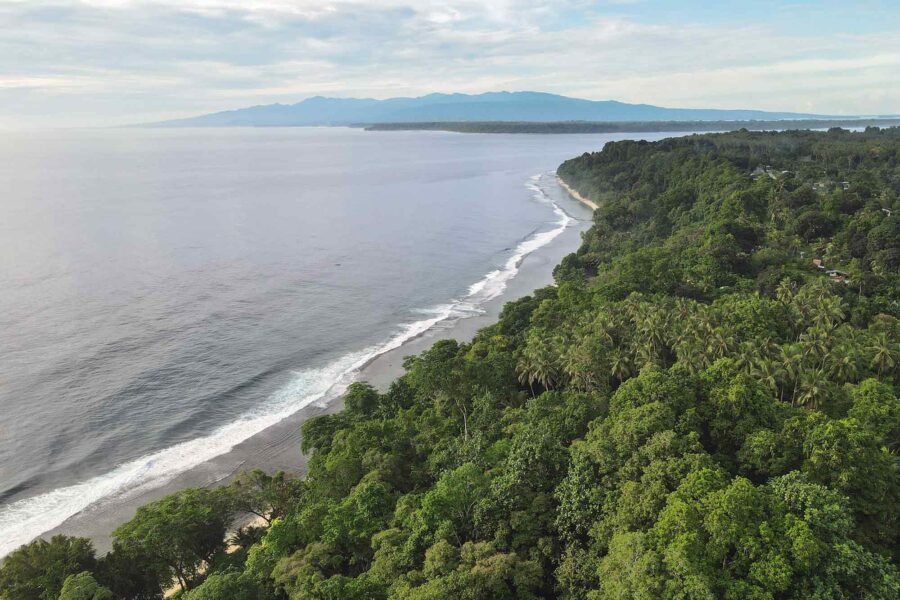
China is actively trying to bring Bougainville into its fold. As early as 2019, the country offered to invest $1 billion in the island’s infrastructure and support its independence bid. Though the deal never materialized, it would have far exceeded the aid package currently provided by Australia, Bougainville’s main development partner.
In 2022, the Chinese struck a landmark security pact with the neighboring Solomon Islands, unnerving the US and Australia. US diplomats, wary of straining America’s close ties with PNG, may hold off on engaging Bougainville until it formally gains independence. But some analysts in Washington are already pushing for a more assertive approach.
In 2024, the Heritage Foundation — a major think tank close to the Trump administration — published a detailed report urging the US to counter Chinese influence on Bougainville. “The island could play a strategic role in the event of military operations, serving as a logistics hub in the Western Pacific,” the report noted, before advising the government to “have diplomatic, economic, and security incentives prepared for Bougainville’s consideration if it becomes independent. Where and when appropriate, the US should engage with local officials.”
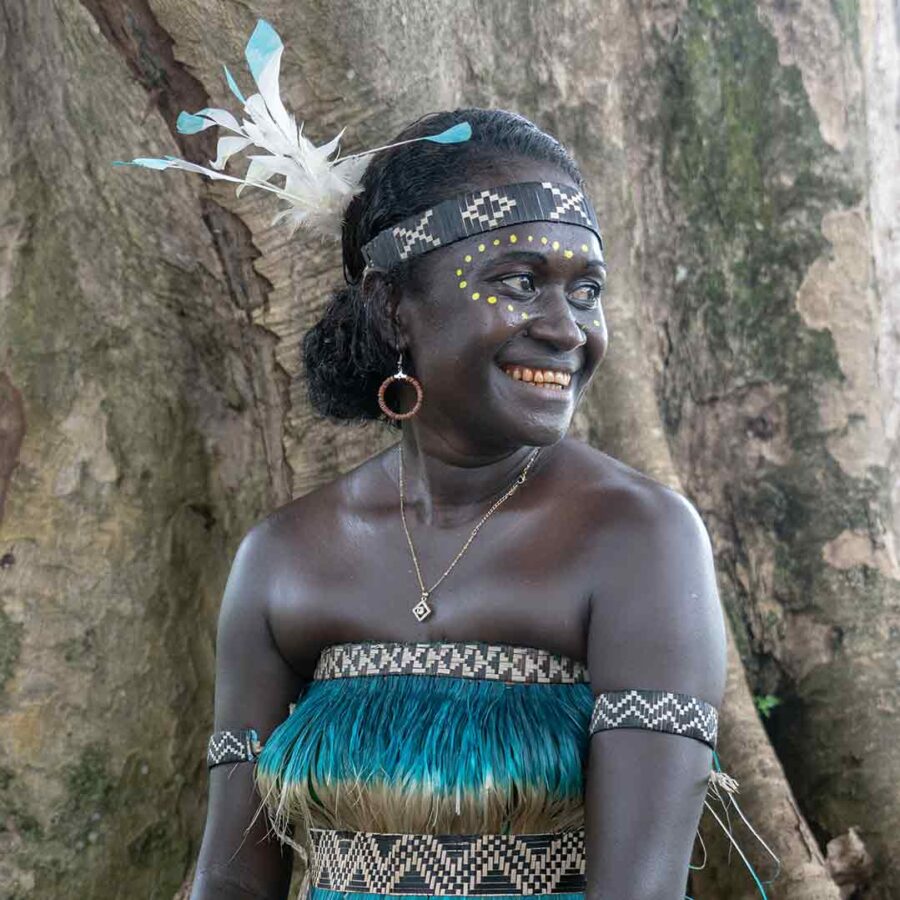
Bougainville has spent decades fighting for the right to govern itself. But freedom isn’t just about borders — it’s about resisting the temptations and pressures that come afterward. Independence, if it arrives in 2027, will mark not the end of a struggle, but the beginning of a more subtle one: to stay independent in a world that rarely allows it.
Théophile Simon is a French freelance journalist who has reported in more than 30 countries. He has covered stories as varied as the war in Ukraine, the Israel-Hamas conflict, and the crisis in Haiti. His reporting has appeared in newspapers and magazines in France, Switzerland, Belgium, Canada and the United States.
